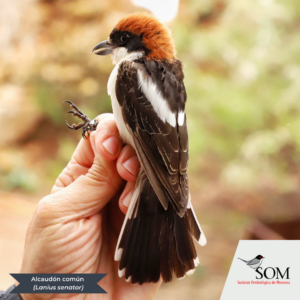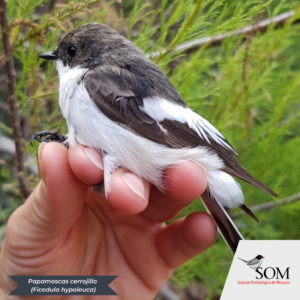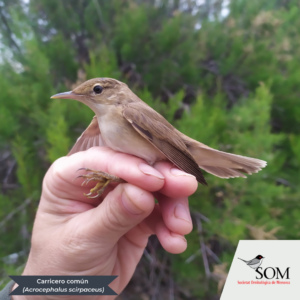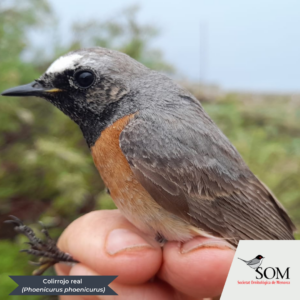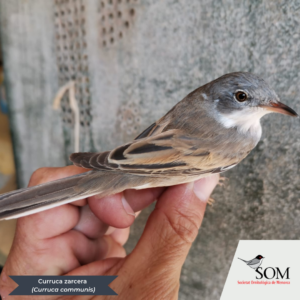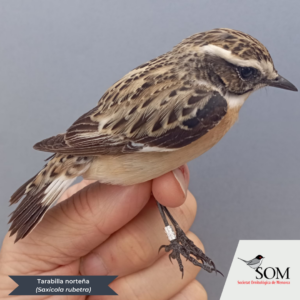Bird species of wetlands could be the most affected by climate change effects
- 2023 has been a good year for catches in the SOM’s Air Island campaign, with 9.8% above average. However, if we take into account the history of the study (1995-2023), the results show a constant loss of migratory flow.
- Also of concern is the negative trend in recent years for the Northern Stonechat (Saxicola rubetra) and the Northern Grey Shrike (Lanius senator), with a notable historical decrease in catches.
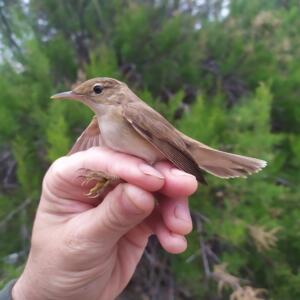
The final data from this year’s campaign of the Study of the prenuptial migration of birds across the Mediterranean on the Isla del Aire carried out by the Ornithological Society of Menorca (SOM) indicate that 3,484 first captures have been made, divided between 3,462 ringings and 22 recoveries of birds captured in previous campaigns or with foreign rings. Of the latter, one came from Belgium, one from Germany and the other two from Denmark and Switzerland.
Overall, 2023 was a good year, with an above-average 9.8% of captures, although, when compared with the historical period, the results continue to show a trend of loss of the constant migratory flow of the migrant birds under study.
Most of the trans-Saharan species have shown positive results, with a record 47 captures in a single day, especially the black-bellied warbler (Hippolais icterina), the redstart (Phoenicurus phoenicurus), the pied flycatcher (Ficedula hypoleuca) and the grey flycatcher (Muscipapa striata/tyrrhenica). Other species such as the nightingale (Luscinia megarhynchos), the blackcap (Curruca communis) or the European turtle dove (Streptopelia turtur), continue with negative trends in the study as a whole.
As for the linnet (Linaria cannabina), a resident species on the islet, catches have also fallen sharply, below the historical average. The experts believe that this decline could be due to late breeding, drought and, perhaps, competition with the rabbit for the salted partridge (Suaeda vera). Also noteworthy is the negative trend in recent years for the northern stonechat (Saxicola rubetra) and the Northern grey shrike (Lanius senator), with a notable historical decline in catches.
On the other hand, the situation of marsh or wetland species is of concern, especially the common reed warbler (Acrocephalus scirpaceus) and the black-bellied sandpiper (Locustella naevia), with results well below average. Ornithologists understand that, as these birds depend on wetlands (habitats that have been hard hit by climate change) to live and, therefore, also to spend the winter and to migrate, they are suffering from climate change more severely than other species. However, they warn that these data should be taken with caution, taking into account the results in other stations of the project, such as the wetlands of the Aigüamolls de l’Empordà, where the species is a summer species and catches of the common reed warbler (Acrocephalus scirpaceus) have increased during the last fortnight of May.
With regard to the breeding species on the Isla del Aire, ornithologists have verified the reproduction of the Balearic wren (Puffinus mauretanicus), whose conservation and breeding on the islet is very important due to the problems of predation faced by the colony on the Mola de Maó. In addition, it is estimated that there are, among others, some 250-300 breeding pairs of yellow-legged gulls (Larus michahellis), some 100-110 pairs of Cory’s shearwater (Calonectris diomedea) and some 25 pairs of storm petrels (Hydrobates pelagicus), with the Isla del Aire being the only place on Menorca where we can confirm the reproduction of this species.
It should be noted that, at European level, according to a study carried out by the University of Exeter, the Royal Society for the Protection of Birds (RSPB) and the Pan-European Common Bird Monitoring Scheme (PECBMS), the European continent has suffered a serious decline in common birds over the last 35 years, with some 421 million fewer birds. According to the latest studies of the Pan-European Common Bird Monitoring Scheme, this negative trend continues across Europe.
In this respect, small islands in the middle of the Mediterranean Sea, such as the Isla del Aire, play a fundamental role in the survival of many migrant birds, providing them with a place to shelter, feed and gather strength to continue their route. Their importance is such that, according to experts, if they did not find these islands, many of these birds would not reach the northern coast of the Mediterranean Sea. It is for these reasons that the protection of these islets and, therefore, the guarantee of good conservation of their habitats is vital to ensure the survival of all migratory species.
The study of prenuptial migration on the Isla del Aire has been carried out since 1995 on the same dates and with the same working methodology. Currently, the total number of first captures stands at 88,814, distributed among a total of 121 different species catalogued in the study. This year’s campaign consisted of 45 days of work, with the participation of 22 expert ornithologists, including researchers and volunteers. In addition, this edition was supported by Menorca Preservation, with the support of the Sant Lluís Town Council and the collaboration of MERAK Diving and the Club Marítimo de Mahón, as far as transport is concerned, as well as the invaluable collaboration of the Autoritat Portuària de Balears (Port Authority of the Balearic Islands).







